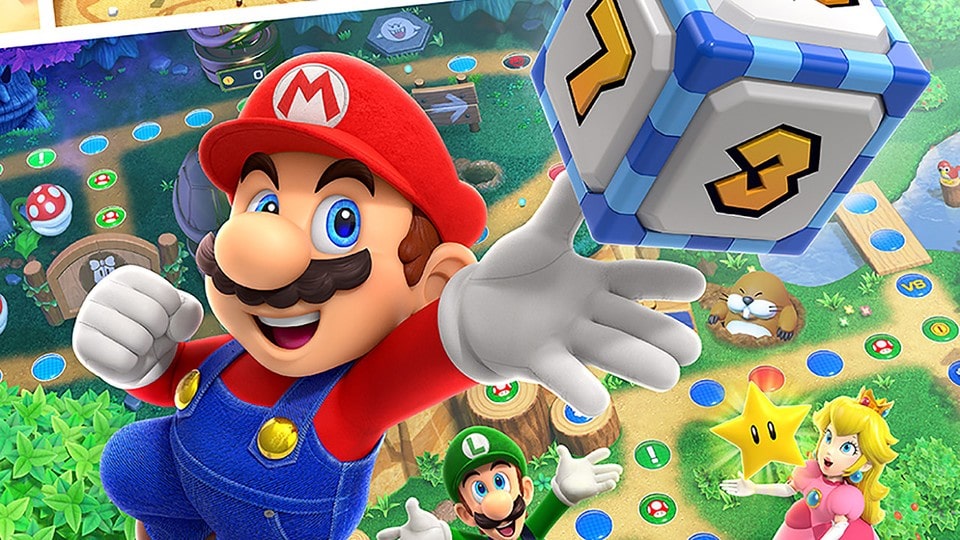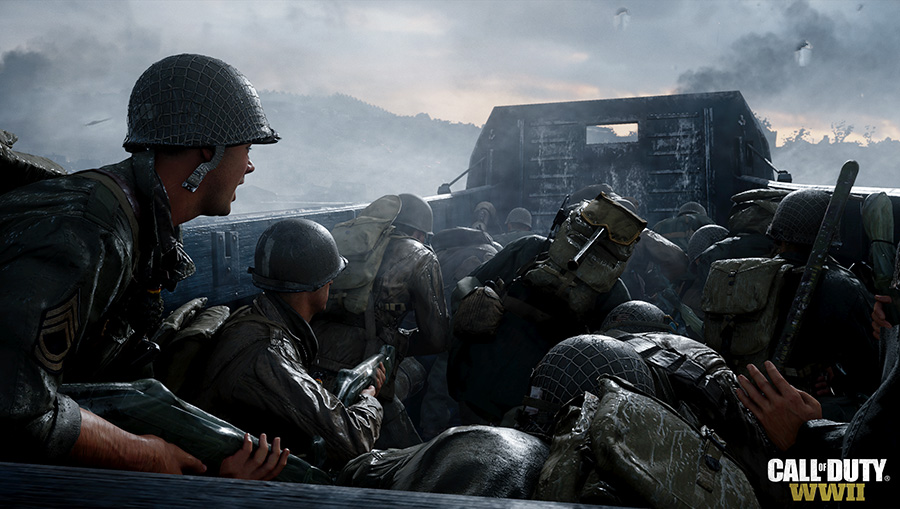We live in a great time for gamers because there’s no shortage of games in any style or genre. Of course, this also means that it’s hard for games to cut through the noise. In fact, gamers only remember and cherish games that allow them to immerse themselves in a story and connect on a deep level with the characters.
Developers and studios understand this and always look for ways to make the games as engaging as possible. There are many strategies and techniques for this, but the winning factor in most cases is to ace the game art that can turn the game into something more than entertainment: A story.
But, how can game art do this? And how can you optimize your game art for engagement? Let’s see.
Game Art & In-Game Engagement
There are many ways a well-crafted game art can boost player engagement. Here are just several of them:
A Life-like, Immersive Experience
Game art can do many things, but one of its biggest impacts is taking the player to a real-world environment filled with powerful emotions. Game artists tweak every single element in a space to portray an outstanding castle, a busy street in New York, or just a calm, green meadow that can stir any emotion within you.
When you see and interact with such a level of detail, it doesn’t feel like you’re here to just pass a level, but it feels like a real adventure where you are the central figure.
Unique, Memorable Characters
Gamers connect with their games on different levels, but one thing is an indispensable part of their experience: The characters. Some characters have such lasting appeal and unique visual features that they turn into a cultural phenomenon. The biggest examples are CJ in GTA: San Andreas, Ezio in Assassin’s Creed, and Mario.

The character’s costume, facial expression, posture, or any distinct visual feature can leave a big impact on the gamer’s mind and let the player connect with the character on a deep level, which is the next point.
Read More: Top 10 Video Game Characters of All Time. What Made Them So Special?
Connecting on a Deep Level
So, you know that with the right game art, you can stir strong, enduring emotions within the player that allow them to relate to the gaming experience. By observing the character’s facial expressions or postures, or interacting with memorable, life-like settings in crucial stages of the game, they start to imagine themselves in the story and become emotionally and financially invested in the game.
Setting the Mood
The player’s emotional investment in the game directly depends on how well you can leverage art to set a fitting mood for that stage of the adventure. Here’s where the colors, lighting effects, and every single visual cue can bring out a certain side of the player.
You can give them terror and fear by portraying a lifeless, abandoned psych ward, with creepy hallways. You can also use your art and craft a WWII battlefield scene with vivid imagery to instill a sense of thrill and even courage. The game artist’s ability to set the scene can make the gamer forget about their surroundings and only focus on what’s in front of them.

Personalization
One of the coolest aspects of leveling up in games is when unlocking new stuff, which gives gamers access to more abilities, stronger tools, and visual features like new costumes, hairstyles, or glasses.
Players use these visual tweaks to personalize their avatars and make the characters their own. It gives them a chance to recreate themselves in the story and grow alongside the character. Offering more detail only adds to the depth of their level of experience and boosts their sense of satisfaction and engagement.
Decision-Making During Gameplay
Despite what some may think, game art is not just about the looks. You can use your tools to help the player gain information and interact with the space. In fact, players rely on visual cues and signs to move forward, unlock the door, take a certain path, and show the right response at the right time.
Probably the most basic example is color-coding the enemy with a color (usually red) on the radar and the map, which lets players know when they are close to a fight or if they are walking down a hostile territory. Just make sure the cues are simple and clear enough so players can get the message and respond in a matter of seconds.
This encourages them to move forward with the story and keep exploring to find more rewards, which only adds to their satisfaction.

Game Art & Brand Engagement
So, we covered the in-game impact of game art in boosting player engagement. But, it doesn’t just end with the gameplay, because it can dramatically change your brand identity, put you on the map, and help you sell more. Here are three ways video game art can affect your marketability:
Positive, Organic Marketing
Distinctive game art creates a lot of anticipation for the game. Gamers who identify with the game are on a mission to give great reviews and recommend it to their friends. It’s almost a free Word-of-mouth marketing service to get the word out about the game and make it go viral.
More Money
A great game armed with genuine marketing means more sales for you. But, it’s not just about the game itself. When gamers connect with the game, they are more than happy to buy in-game assets and sequels. You can also make money from selling things like merchandise and licensing deals. It basically opens more revenue streams.
Brand Loyalty
Game art creates a visual identity for your brand, from character design to logo and color combinations. Now, when the player engages with the game on a deep level, they will identify the brand and go look for other games that you made. This is practically how you can build an avid fan base, or a community, for your game.
Game Art & Animation
As you already know, a significant part of game art ties to animation. The job of animators is to breathe life and personality into inanimate objects. The whole point of animation is usually to make things look real and make the game more fun to play. Having an empty setting with superficial characters can get boring quickly. Facial animation is a crucial aspect of storytelling and expressing emotions, and animators usually focus on this area. This is crucial for games with a lot of plot and cutscenes.
How to Make Your Game Art This Good
You can see how game art can immerse players into the storyline, push them to explore the game and help them empathize with the characters. It can also encourage them to buy in-game products, promote your game, and become loyal to your brand.
So, now the question is, how can you optimize your game art to get these benefits? How can you connect with the gamer and transport them into the game world? There are a couple of steps that can point you in the right direction. First, you need to understand who the gamers are.
Get to Know the Gamers
Before you dive into making game art, you must discover who you make it for and what they want from your game. What do they like, what makes them feel alive, and what do they need? What kind of culture are they into, how old are they? If you get to know the target audience, it’ll be easier to create art that they’ll love and connect with. So, make sure you understand their expectations, the market gap, and their favorite art style. You can learn more about your target audience and what they like via polls, surveys, and market analysis.
Choose a Fitting Art Style
You must choose an art style after you know the gamers. The art style is about how it looks and feels, the theme, atmosphere, and mood of your game. You can use sketches, references, and other similar tools to optimize your art style. You can look at some templates to get inspiration and see how it fits your vision.
Just make sure that the art style complements the game story and gives you enough leeway to create the characters and the environment in a way that fits your vision and attracts your target demographic.
Read more: Different Game Art Styles and How to Choose the Right One for Your Game
Make Sure it Fits the Sound Effects
As you know, game art is part of a bigger game development. So, you can’t just focus on the visuals without considering the power of music and sound effects on the gaming experience. You want to choose elements that seamlessly blend with sound effects to stir different emotions within the player.
Check the Competition
You can learn a lot by looking at other games and seeing how they use game art to boost engagement. It’s all about seeing what works and what doesn’t, and then using that knowledge to make your own art even better.
Take a moment to see how various games use diverse art styles, resources, lighting, shading, and other tools to craft their unique game art. You can also see how they balance performance with aesthetics.
It’s wiser to study games with the same genre and a similar story because there’s a good chance that you deal with the same target audience.
Test & Adjust
Testing and iterating are the last steps to creating game art that attracts your audience. It helps you see what works and what doesn’t. Here, focus groups, screenshots, user testing, and video capture can really help. But, you must listen to feedback, look at the data, and see how it shows in the gameplay. Then, you make adjustments based on all that.
Team Up with Experts
There’s a lot of value in optimizing your game art for gamer engagement, but it’s also a lot of work. Game development isn’t just about game art, which means that your time is already divided into many areas. This is why many producers prefer to outsource game art development and be more efficient with their time.
Of course, money and infrastructure are other reasons that motivate developers and animation studios to team up with a team that already has the infrastructure and expertise to move things around much faster.
Conclusion
Video game art is invaluable in making players get into the gameplay and have an engaging experience. Game artists create immersive worlds that resonate with players and let them live their own stories.
At the same time, you want to save as much money and time, without going through endless trial and error. This is where a reliable animation studio like Dream Farm Studios can help. You can contact us and get a quote right now!

